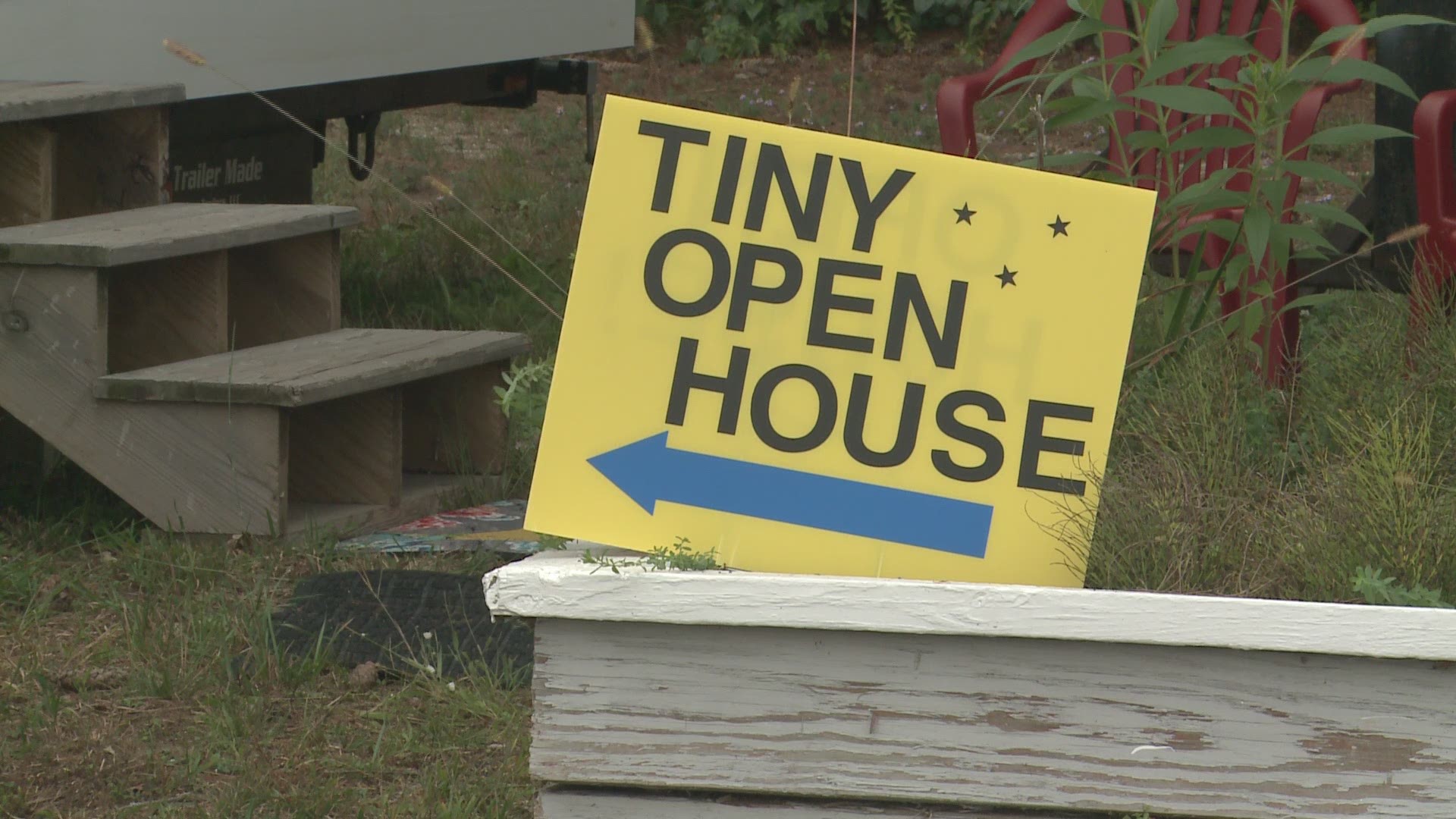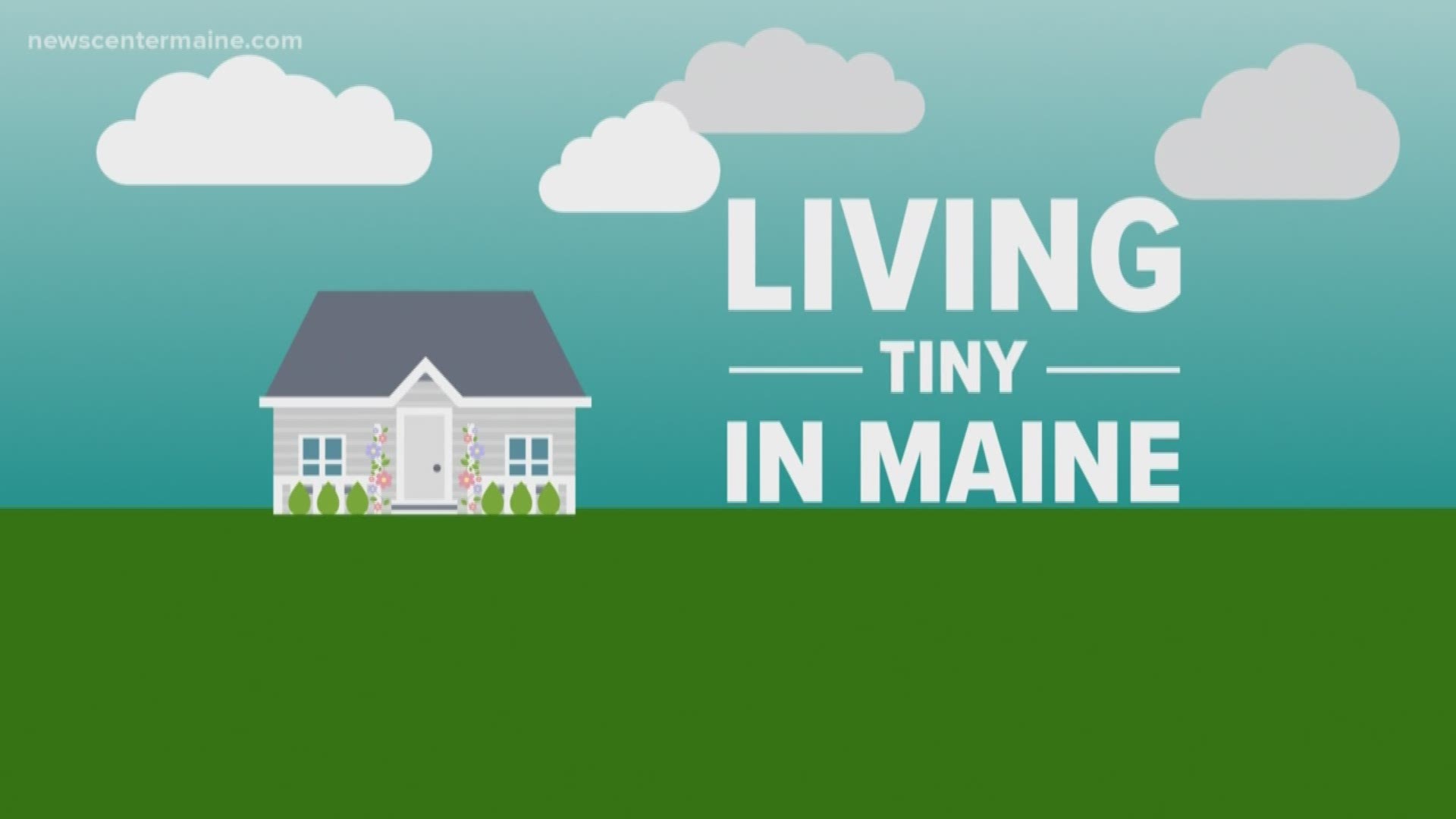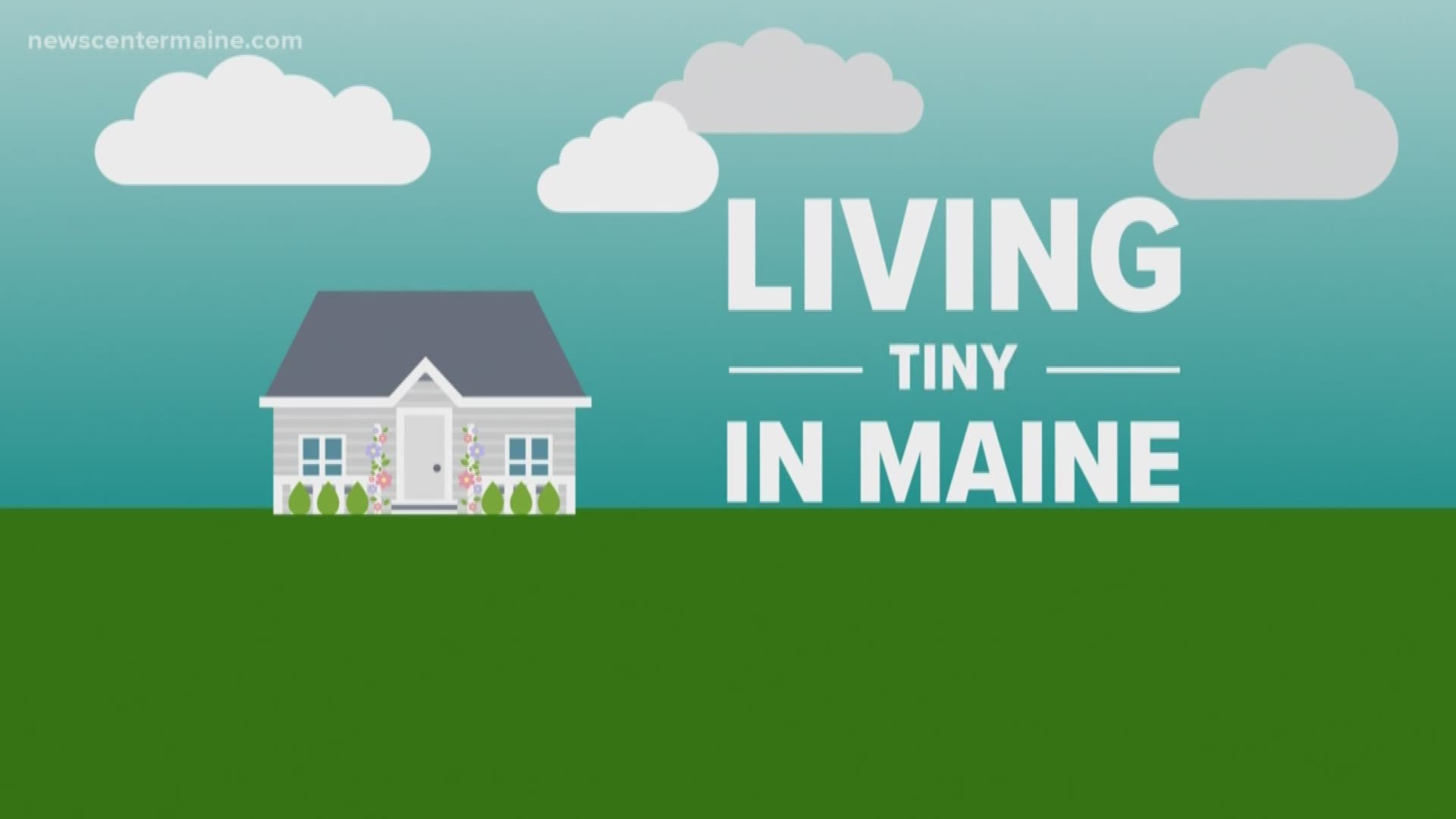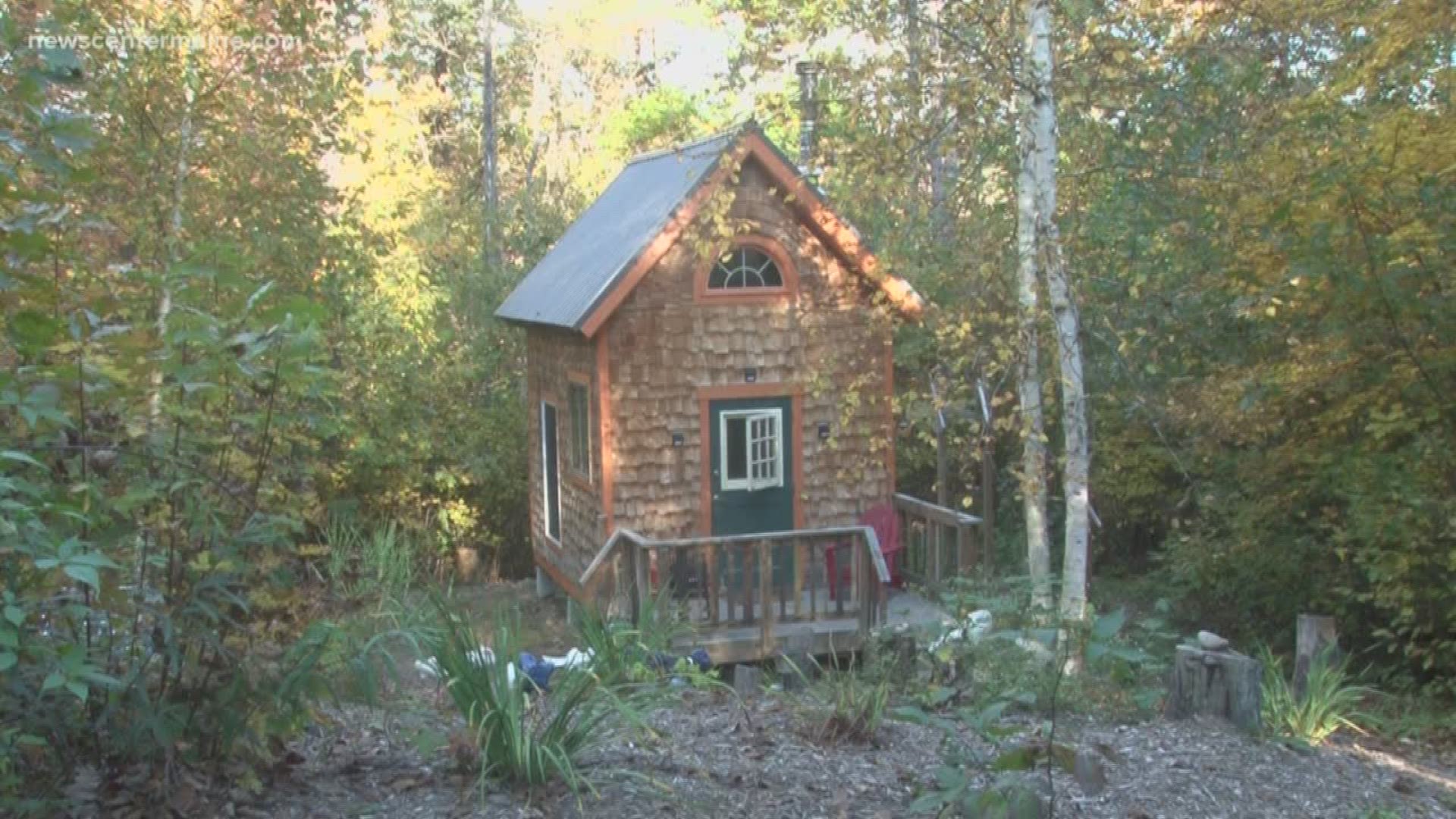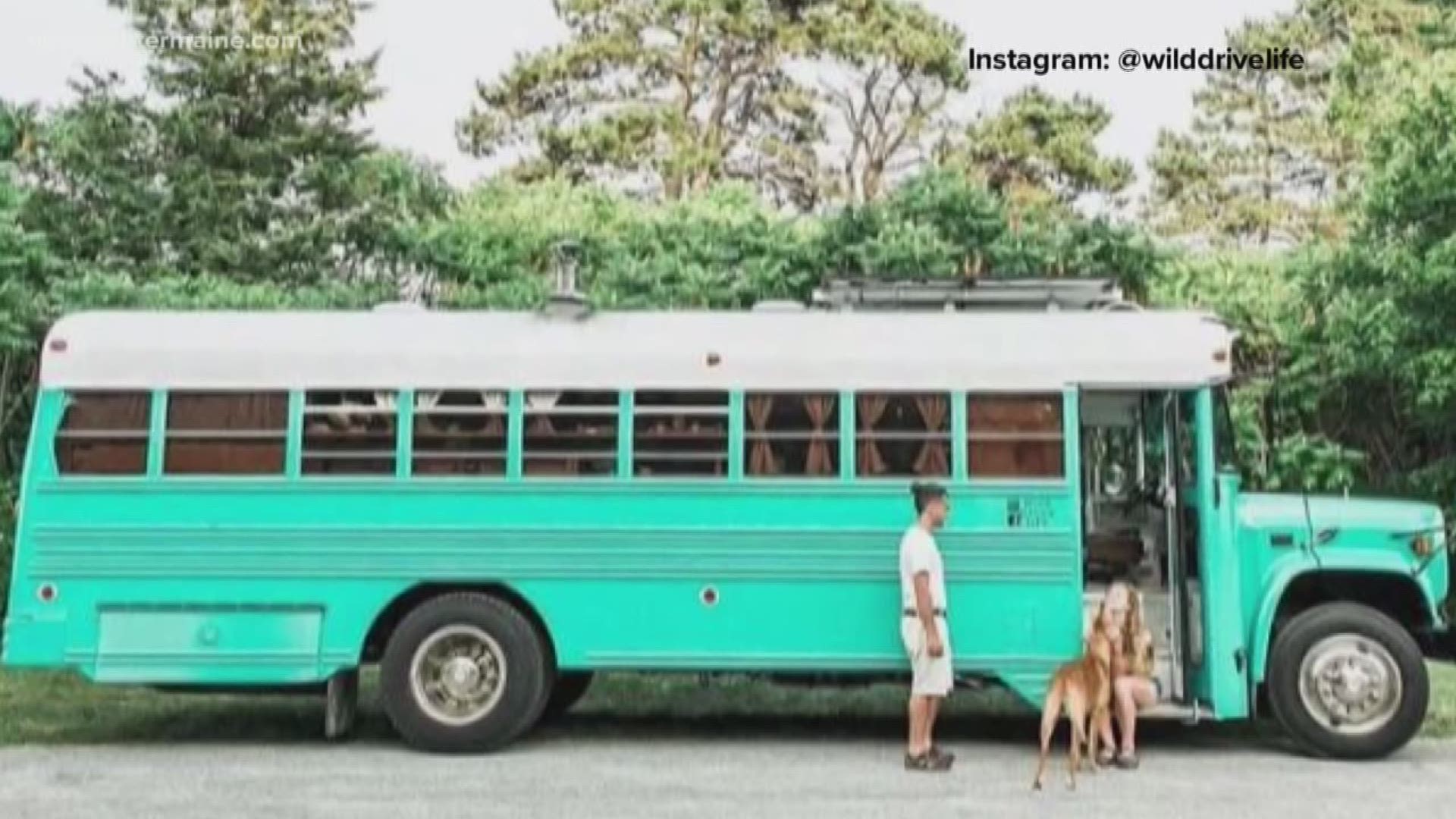PORTLAND (NEWS CENTER Maine) —Tiny homes are picking up in popularity all across the country, including Maine. Not a trailer home, or a camper, or an RV, a tiny home has no set definition, an issue that will be further discussed later in this article, but is traditionally smaller than 500 square feet, fits on a trailer and can be towed with a pickup truck or hearty SUV. A tiny home can also plug directly into an existing infrastructure, or function "off-grid" with a composting toilet and gravity water system.
As to who lives in these tiny homes, the reasoning varies; some are divorcees who want a less expensive way to live on their own, while others just generally want to save money by paying less and living with nothing more than what they need, others want to reduce their carbon footprint by choosing a more eco-friendly way of living, or want the freedom of being able to move their home wherever they want whenever they choose.
All week on the Morning Report, starting Monday, October 29, Katie Bavoso will be introducing us to tiny homes; what they are, who lives in them, the laws surrounding them, who makes and sells them, and what you need to know before you purchase and live in one.
WHAT IS A TINY HOME?
There's no set description, in Maine or otherwise, of how a tiny home is defined. Not a mobile home, or an RV, or even a camper. a tiny home is traditionally described as a house that is 400 square feet or smaller. They're designed for mobility and can fit on a trailer and be pulled by a pickup truck.
Corinne Watson started Tiny Homes of Maine, a high-end tiny home designing and manufacturing company, in 2015. Her models range from about $40,000-$80,000, but some houses on the market retail for as low as $10,000-$20,000.
A tiny house's utility system can hook up directly into existing infrastructure, or stand-alone "off the grid." Watson says her custom-order tiny homes are a greener option than "cookie cutter" mass-produced homes.
"People can choose a regular flushing toilet if they're hooked up to a septic system or public sewer, but so far we've sold all of our units with composting toilet," Watson said.
She added that designing the customizable homes is greener than mass-produced houses because very little waste gets left over. Additionally, light, heat, and appliances all run on electricity.
"We have run this through the winter, not this particular model, plugged in" Watson said while standing inside her largest model, an eight by 30 foot tiny home with two sleeping lofts. "And granted no one was living there, but it was about $38 a month."
Currently, the state of Maine does not have firm codes for so-called tiny homes and leaves the decision of whether or not to allow them, and how, up to the cities and towns. Because of that, Watson says most towns shy away from allowing them. She says as popularity grows, that needs to change.
"They're not going away. People are going to be living in tiny homes."
LAWS, CODES, AND TINY HOMES
Alan Plummer refers to himself as a minimalist and says living tiny allows him to use his money for things he wants, and not on bills and things he generally doesn't need. The Maine representative for the American Tiny House Association, Plummer is currently working towards purchasing a plot of land and several more tiny homes that people could rent while building their own tiny house to take wherever they choose. Plummer sees this as a way to give people an affordable housing option.
"If you want affordable housing, make an affordable house."
Like many tiny home enthusiasts, though, there are several obstacles standing in his way. In Particular, a lack of codes and ordinances that translate to tiny homes.
Plummer says various state building codes require a certain amount of fixtures in a house, where a tiny home would need only half of them. Or a minimum square footage that a tiny home doesn't meet because it's still too small. One of the biggest issues is where do you put them? There is no set definition of what a tiny home is. In Maine, the choice to accept and regulate tiny homes is left up to the town or city code enforcement officers, or the Land Use Planning Commission. Often, tiny homes are categorized as RV's, which aren't allowed to be lived in year-round in one spot.
"Right now, there's no universal association that will give a stamp to a tiny house if it meets all these requirements," said Plummer.
Right now, Plummer is drafting code guidelines for tiny houses in Maine to be reviewed by lawmakers in the future. Until then, he says to check with town code enforcement officers to see what the options are for living tiny before moving there.
However, the landscape for Maine tiny homes is already changing.
"Now they're a growth industry, the tiny homes, and 60 years ago the homes were tiny and it was a growth industry," said Kitt Scarponi, general manager of Linnhaven Mobile Home Center in Brunswick. He says it's like "history repeating itself."
The property welcomed its first tiny home this year, but Scarponi says he never denied accepting tiny homes before.
I think with the general awareness of the tv shows and the news coverage, people are looking at it as more of an option.
Scarponi says it's fairly easy for him to make sure the tiny homes meet the same rules that mass-produced mobile homes do; namely skirting around the bottom to protect the utilities, keeping the water connection warm, and making sure the home is prepared for the harsh winters. It takes some added planning, but at a little more than $300 a month to rent the lot, tiny homeowners have the rare opportunity to settle down.
LIVING TINY OFF THE GRID
In Waldo County, 32-year-old Moriah Helms has been living her life free of restrictions in her 8 by 16 foot tiny home for two years.
"People will be like, 'oh, you live in a tiny home! That's my favorite show on the Home and Garden TV!'" she said. "I'm pretty sure my house is not like the houses that you're seeing on that show!"
A yoga teacher, relationship coach, and spiritual mentor who is often traveling, Helms says her lifestyle is made possible by her choice to live tiny.
"I didn't feel like I needed something large, I didn't have a huge budget, and I totally hate paying rent for an apartment," Helms said.
Helms's tiny house is located on a friend's property in Waldo County, where she hauled it to from Vermont after buying it second hand from a friend- for $10,000. She said it took her group 12 hours to haul it to it's new destination with a Toyota Tundra.
Now she lives completely off the grid, unhooked from utilities. Instead she hauls water from a well, cooks with propane, and charges her few electronics using a single solar panel. Heating the roughly 200 square feet is easy with her wood stove. Her home features a kitchen and living area with two sleeping lofts. The bathroom? An outhouse with a very simple composting toilet. However, for Helms, who spends much her time outside, growing her own food, what she has is enough.
"I'm noticing, like, the birds, or the weather, or the stars because I got up to pee in the middle of the night," she said. "Those relationships are made more vivid."
GIVING TINY A TRY
If you are thinking about going "tiny," but aren't quite ready to take the plunge, consider renting one first.
There's a tiny Air BnB retreat in the woods of Waterford, Maine made out of reclaimed materials, and it books up fast.
"People are interested in tiny homes and want to build one themselves," said proprietor Keith Tiszenkel. "So, people come here for inspiration."
The only developed three acres of land in the middle of nearly 500 acres of forest, Crooked River Tiny House offers an extreme, unplugged, off the grid tiny home experience full of local flare.
"We just wanted this to feel like Maine to them," Tiszenkel said of the decor of the tiny home that echoes the landscape and culture of the Western region of Maine.
If you stay here, it takes work. No running water, no electricity outside of a few solar powered lights. If you want to drink, cook, or bathe, you have to haul water by hand from the Crooked River- then hand pump your shower. A wood burning stove warms the 200 square foot main tiny house, while the guest house holds a primitive composting toilet. Adding the scent absorbing cedar chips and rotating the bucket, that's up to the guests. Regardless, the rentable tiny home comes close to selling out every season.
This level of tiny living isn't something Tiszenkel thinks is a full time option for everyone, including him.
"It's not for me. It's not for myself. I'm from New York City Originally, so I need my creature comforts."
After a weekend here, you might have your mind made up about living tiny.
LIVING TINY ON THE ROAD
While not a exactly a traditional tiny home, a couple from Old Orchard Beach, Maine is living what many people dream of doing- they're traveling the country on the open road. However, not many of us might consider doing it in a former prison bus, but that's exactly what Meagan and Ben Poirier are doing.
Five years ago, the Poiriers decided to buckle down, pay off their $80,000 of student loan debt, and hit the road on a new life adventure. They found a black 1989 retired prison bus on Craigslist. Seeing the potential, the couple bought is for $8,000.
"When we bought it, it was frightening looking, and everyone was like, "you're nuts!" said Meagan Poirier.
After fixing the bus up by hand, the couple finally set off in January. Since then, they've driven more than 12,000 miles through more than 30 states.
Inside the bus, the electronics and appliances run on solar power, and pressurized running water comes from two 40 gallon tanks. The open concept design includes a kitchen, living space, bedroom, even a hidden bathtub and composting toilet.
Still, the Poiriers lack a few creature comforts.
"When we go somewhere else we're like, 'hey do you have any ice?'"
The experience has shown the young couple just how far their resources go, and don't go.
"That was really, like, enlightening to see what we use in a regular home compared to what we can actually get away with here, and what we can actually be comfortable with getting away with," said Ben Poirier.
After five years of marriage, they say they've also been given the chance to get to know themselves, and each other, even better.
"It really gives you time to think and to process what's in front of you on a deeper level, because it really, like, it keeps you in the moment," said Meagan Poirier.
Currently the two are focused on exploring and sharing their journey on their blog, the Wild Drive Life, while also mentoring others on how to live more simply with fewer expenses. The Poiriers say they don't have a plan for how or when their journey will end. They're just enjoying the ride.
"This thing that we'll never regret trying and doing and experiencing, because it's changed us in really unique ways already," said Meagan.


